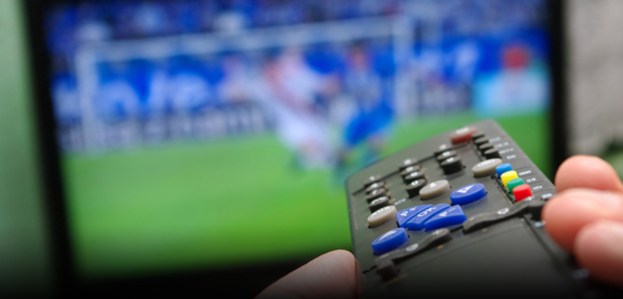 Although today’s high-definition televisions (HDTVs) are more technically advanced than ever before, the good news for everyday users is that connecting home theater components keeps getting simpler. Thanks to the advent of HDMI (an all-in-one digital cable that carries both audio and video signals between individual pieces of equipment) there’s no need to toil with a mess of tangled cables. With just one cable connecting each device to your AV receiver or your TV, it’s easy to mix and match parts in minutes. You can even make components like a Blu-ray player control your TV. Here’s a step-by-step guide to connecting standard home theater components using the format, including a Blu-ray disc player, satellite (or cable TV) receiver, an AV receiver for surround sound and an HDTV.
Although today’s high-definition televisions (HDTVs) are more technically advanced than ever before, the good news for everyday users is that connecting home theater components keeps getting simpler. Thanks to the advent of HDMI (an all-in-one digital cable that carries both audio and video signals between individual pieces of equipment) there’s no need to toil with a mess of tangled cables. With just one cable connecting each device to your AV receiver or your TV, it’s easy to mix and match parts in minutes. You can even make components like a Blu-ray player control your TV. Here’s a step-by-step guide to connecting standard home theater components using the format, including a Blu-ray disc player, satellite (or cable TV) receiver, an AV receiver for surround sound and an HDTV.
1. Choose your cables. Start by determining the exact length you need, as these items are generally sold in 3 feet, 6 feet, 10 feet and other, similar increments, with lengthier cables commanding higher prices. Begin by measuring the distance from your components to your AV receiver (or TV if you don’t have an AV receiver). Then measure the distance from your AV receiver to your TV. If total measurements are close to a given size – e.g. just an inch shy of 3 or 6 feet, etc. – be sure to choose one size up, as you’ll want to allow for a little slack when making connections. Be sure to select a quality HDMI cable as well: Speed-verified cables will guarantee the ability to handle advanced Blu-ray disc player features like 1080p Full HD resolution and Deep Color for the best picture quality available.

2. Locate the HDMI connections on your components. There will be one HDMI output on your Blu-ray disc player. And there will be one HDMI output on your satellite (or cable TV) receiver.

3. Connect one end of an HDMI cable to the output on the Blu-ray disc player.

4. Connect the other end of that HDMI cable from the Blu-ray disc player to the HDMI input on your AV receiver. Be aware: There may be multiple HDMI inputs on your AV receiver. Note how each input is labeled and make note of the label. It could be BD (for Blu-ray Disc player), TV/SAT, TV/Cable, DVR, etc. Or it could be simply HDMI 1, HDMI 2, etc. Most modern AV receivers allow you to label the input in the setup menu when you are done.

5. Connect the satellite (or cable box) to the AV receiver. Connect one end of another HDMI cable to the satellite receiver (or cable box) and connect the unused end of that cable to the TV/SAT HDMI input on the AV receiver (or simply choose any free HDMI input on the AV receiver). Note the label on the input to which you connected that HDMI cable.

6. Connect the AV Receiver to the TV. To do so, find the HDMI port on the AV receiver that is labeled “out to TV” or “monitor out” or simply “Out”.

7. Connect the other end of the HDMI cable out from the AV receiver io an HDMI input on the back of the TV. If you are mounting the TV on the wall and it is a tight fit, you can get a right angle HDMI adapter so the cable can fit in the back.

8. If you don’t have an AV receiver, connect an HDMI cable from the Blu-ray disc player directly to the TV. Then, connect another HDMI cable directly from the satellite receiver (or cable box) to another HDMI input on the TV.

9. Plug your TV and components into an electrical outlet. Be certain to use a surge protector, because blackouts and brownouts can damage the electronics in your components. A surge protector with power conditioning will further protect delicate circuitry in high-definition components by reducing power fluctuations and removing interference. This results in the best picture and sound performance from your home theater.

10. Put the finishing touches on by renaming the inputs on your AV receiver or TV to make it easier to choose the right input when it’s time to kick back, relax and enjoy a little high-definition content. If you have connected equipment to an AV receiver, you can change to the component you want (e.g. switching between live programming and a Blu-ray movie) to use by using your receiver’s remote. If you have connected devices directly to the TV, you will use the TV’s remote to change to the input you want to watch. Either way, get ready to have fun, knowing you’re about to enjoy the best, most complete high-definition home theater experience possible.

This article has been updated since it was originally published to reflect hardware updates and other details.



